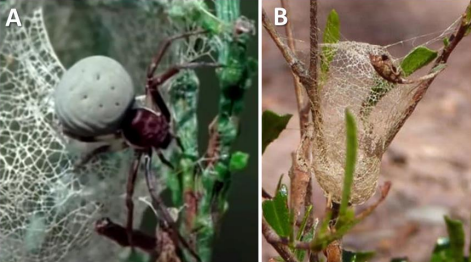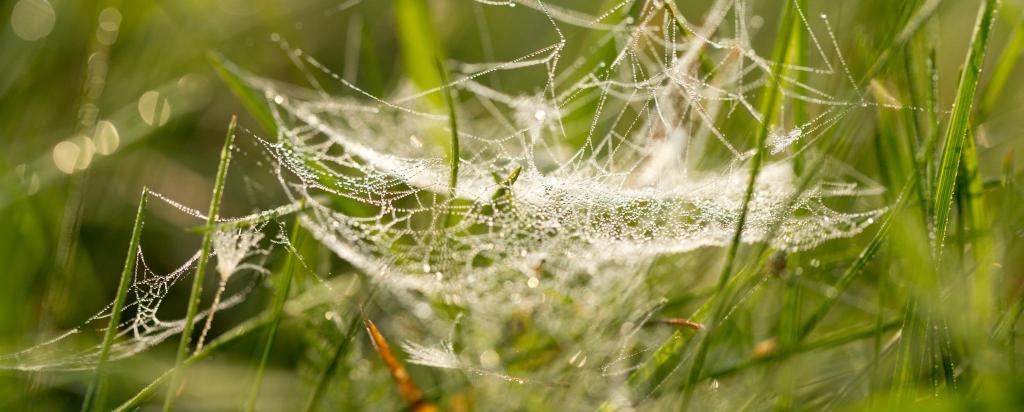

Secrets of Australian Basket-Web spider’s silk
Our understanding of the properties of spider silk is largely confined to the fibres produced by orb-weaving spiders, despite the diversity of foraging webs that occur across numerous spider families.
The Australian crab spider Saccodomus formivorus is the only spider known to weave a unique basket-like web; however, the key to its remarkable design and robust structure is unknown.
Work undertaken at the Australian Synchrotron Infrared Microspectroscopy (IRM) Beamline has led to the first insights into physical and chemical properties of this basket-web silk responsible for the thread’s extreme elasticity and robustness. The new information could be used to underpin the development of artificial spider silks for textile and medical applications.
Our research

The Australian crab spider Saccodomus formivorus (A) and its unique basket web in its natural form (B).
An international collaboration between the University of Melbourne, University of Bayreuth and ANSTO’s Australian Synchrotron, has been formed to characterise the rare silk of the Australian basket-web spider (A).
Physical examination using scanning electron microscopy indicates that the web threads comprise microfibres that are embedded within a matrix of submicron fibres. Synchrotron infrared technique was able to differentiate chemical composition of these two distinct types of fibres within the thread. While the microfibres are high in protein, the submicron fibres contain a high proportion of saccharides, which is part of complex carbohydrates. This suggests that saccharide components play an important role in the cohesion, and thereby the strength, of the silk fibres.
The data revealed for the first time that the extreme elasticity and robustness of the silk are due to the synergistic or complementary arrangement of the two fibres, enabling the basket web to maintain its structural integrity without help from the surrounding vegetation (B).
Our impact
The insights into the silk threads could be inspiring twofold. First, the threads could be used as a natural blueprint for the design of man-made rigid threads, which hold a potential as advanced biomimetic materials for textile, tissue engineering and medical applications. Second, the unique structure of the threads comprising two different fibre types may inspire the development of extrusion-based processing technology for fabricating rigid composite threads in a scalable manner. Together, this research aligns with the national science and research priorities of Australia in the field of Health and Advanced Manufacturing.